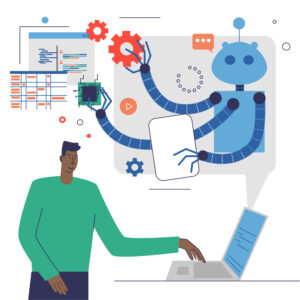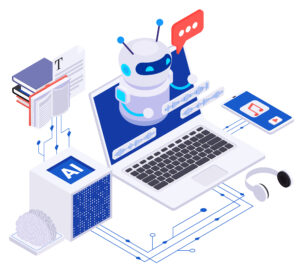Introduction:
I. Overview of Artificial Intelligence:
Artificial Intelligence encompasses a broad range of techniques and technologies that aim to mimic human intelligence. It includes sub-fields such as natural language processing, computer vision, and robotics. AI systems can perceive, reason, and learn from data, enabling them to perform complex tasks and solve problems.
II. Understanding Machine Learning:
Machine Learning is a subset of AI that focuses on developing algorithms and models that allow systems to learn and make predictions or decisions without explicit programming. ML relies heavily on data to drive the learning process, extracting patterns and insights to improve performance.
III. Key Differences between AI and ML:
A. Scope and Capability:
AI is a broader concept that encompasses ML and other techniques. It aims to replicate human-like intelligence, while ML focuses on data-driven learning and prediction-making.
B. Approach and Methodology:
AI employs various approaches, such as rule-based systems, expert systems, and symbolic reasoning, to achieve intelligent behavior. ML relies on statistical techniques and algorithms to analyze data and extract patterns.
C. Learning and Adaptation:
AI systems can adapt and improve their performance based on experience, environmental changes, and feedback from interactions. ML specifically focuses on learning from data and improving performance by optimizing models based on observed patterns.
D. Human Intervention and Programming:
AI systems often require extensive human intervention and programming to operate effectively. ML systems can learn and improve autonomously through training on large datasets, reducing the need for explicit programming.
IV. Synergy between AI and ML:
AI and ML are interdependent and work in synergy. ML provides the foundational tools and techniques for AI systems to learn and make decisions. AI, in turn, enhances ML algorithms by integrating additional capabilities such as natural language understanding or image recognition.
Artificial intelligence: Wikipedia
Machine learning: Wikipedia
Read another post Artificial Intelligence (AI) and Machine Learning (ML)
Conclusion:
Artificial Intelligence and Machine Learning are distinct but interconnected fields that are transforming industries and driving technological advancements. While AI focuses on replicating human-like intelligence, ML extracts patterns from data to make predictions or decisions. The synergy between AI and ML is crucial for unlocking their full potential and will continue to shape our future. Continued research and development in both AI and ML are essential to harness their power and realize their trans-formative impact.
FAQs:
Q: How does Machine Learning differ from traditional programming?
A: Traditional programming involves explicitly providing instructions and rules for a system to follow. In contrast, Machine Learning relies on data to train models that can automatically learn patterns and make predictions or decisions. ML algorithms adapt and improve their performance over time through exposure to more data, while traditional programming requires manual updates to modify system behavior.
Q: Can Artificial Intelligence systems learn and improve autonomously?
A: Yes, AI systems can learn and improve autonomously. They can adapt their behavior based on experience, feedback, and changing environments. ML, as a subset of AI, specifically focuses on learning from data. By training on large datasets, ML systems can autonomously improve their performance without explicit human intervention or programming.
Q: How do Artificial Intelligence and Machine Learning work together?
A: AI and ML are interconnected and work in synergy. ML provides the foundational techniques and tools for AI systems to learn from data and make predictions or decisions. AI enhances ML algorithms by integrating additional capabilities like natural language understanding or image recognition, enabling more advanced and intelligent behavior.
Q: What are the practical applications of AI and ML?
A: AI and ML have a wide range of practical applications across various industries. For example, in healthcare, AI and ML can be used for disease diagnosis, drug discovery, and personalized medicine. In finance, these technologies can aid in fraud detection and risk assessment. Other applications include autonomous vehicles, virtual assistants, recommendation systems, and predictive maintenance in manufacturing, among many others. The potential of AI and ML is vast and continues to expand as new advancements are made.




Pingback: Python in AI (Artificial intelligence) and ML (Machine Learning)